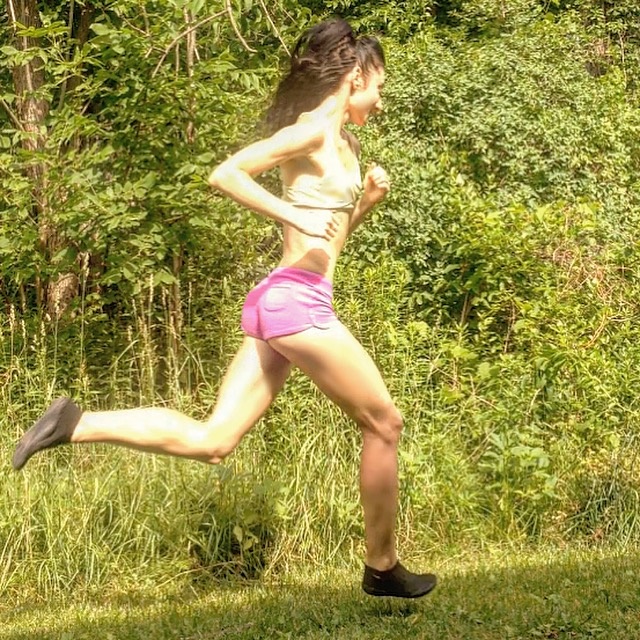Did you know that it’s more challenging to run slow than running faster? A lot of runners think that if they run quickly more often, they increase their risk of injury. This is a message the running shoe industry puts out, so you will buy their cushy shoes for more protection. But, if you run with a forefoot strike, your body has a safer exchange with the ground, rather than if you ran with a heel strike, which is blamed for most running injuries. Anyways, how fast should you really be running?
Run quickly to handle your forefoot running mechanics better. So how fast should you run? The sweet spot seems to be around 13 km/hr and faster. How come?

Run Quickly to Save More Energy
When forefoot runners increase their running speed, their foot strike and leg swing mechanics improve as compared with jogging.
Good forefoot running mechanics includes greater ankle plantar flexion at touchdown, a lower center mass, and a higher step frequency –all of which are optimized when running at speeds 13 km/hr or faster. The end result, a lesser brake/push duration ratio, low frequency load components and greater elastic contributions of the lower leg (Lacour and Bourdin, 2015).
Wont running faster increase the risk of injury?
If you were a heel striker, then running faster would raise your risk of injury, however this is not the case for forefoot runners because stride frequency naturally increases with running speed during forefoot running, which in turn reduces ground contact time, thereby limiting impact stress of each step, especially over long distances (Millet et al. 2012).
Running Slow Makes You Less Efficient
Running too slow may prevent you from optimizing your forefoot running mechanics because you are idling in deceleration mode. Remember, forefoot running is for running fast, which is why sprinters use a forefoot strike, running too slow will therefore, cloud your technique.
- Slower running drains energy because vertical deceleration is greater which reduces the capacity of the muscles to reuse stored energy, and more muscular work is needed for propulsion (Lacour and Bourdin, 2015).
Even when you feel tired, try running faster because it shifts you closer to the optimum balance of good form and energy usage.
To make sure I don’t fall off pace, I use the Garmin Forerunner 305 which beeps to alert me when I’ve slowed down. Ideally, you want a GPS watch with the ‘pace alert function’, this will help you maintain a fast, even pace.
More From Run Forefoot:
How to Treat Achilles Injury – Find out an easier way a forefoot runner can effectively treat an Achilles tendon injury.
Foot Nerves – Find out how going barefoot affects the nerves in the feet as compared with wearing cushioned running shoes.
Best Shoes for Forefoot Runners – Here are my reviews on the best forefoot running shoes for you!
Why Run Forefoot – An overview as to why I feel forefoot running is the way humans were designed to run.
Injury Prevention – Learn how forefoot running mechanically can prevent injuries better than heel strike running.
References:
Lancour JR and Bourdin M. Factors affecting the energy cost of level running at submaximal seed. Eur J Appl Physiol, 2015;
Millet GY, Hoffman MD, Morin JB (2012) Sacrificing economy to improve running performance—a reality in the ultramarathon? J Appl Physiol 113:507–509.
Bretta Riches
BSc Neurobiology; MSc Biomechanics candidate, ultra minimalist runner & founder of RunForefoot. I was a heel striker, always injured. I was inspired by the great Tirunesh Dibaba to try forefoot running. Now, I'm injury free. This is why I launched Run Forefoot, to advocate the health & performance benefits of forefoot running and to raise awareness on the dangers of heel striking, because the world needs to know.
Latest posts by Bretta Riches (see all)
- Are Minimalist Shoes Good for Seniors? YES! - 14/04/2024
- BIG Deals On Running Gear And More! - 09/04/2024
- Why Are My Feet Tired After Running? - 04/04/2024

Leave a Reply